The Design Commission has approved the first phase of the Pepsi Blocks, part of a nearly five acre masterplan which was approved in 2018. Phase 1A will include an eight-story, 85’ tall building with 219 residential units (including 80 bedrooms of affordable housing); nearly 13,000 sq ft of retail space; the restoration of the existing mid-century bow truss Pepsi pavilion building; a publicly accessible plaza; and portions of a woonerf along NE Pacific St. The project is being designed by Mithun for Security Properties. 164 vehicular parking spaces and will be provided in two levels of below grade parking. 247 long term bicycle parking spaces will be provided in a secure bike room, including 17 spaces for recumbent or cargo bikes.
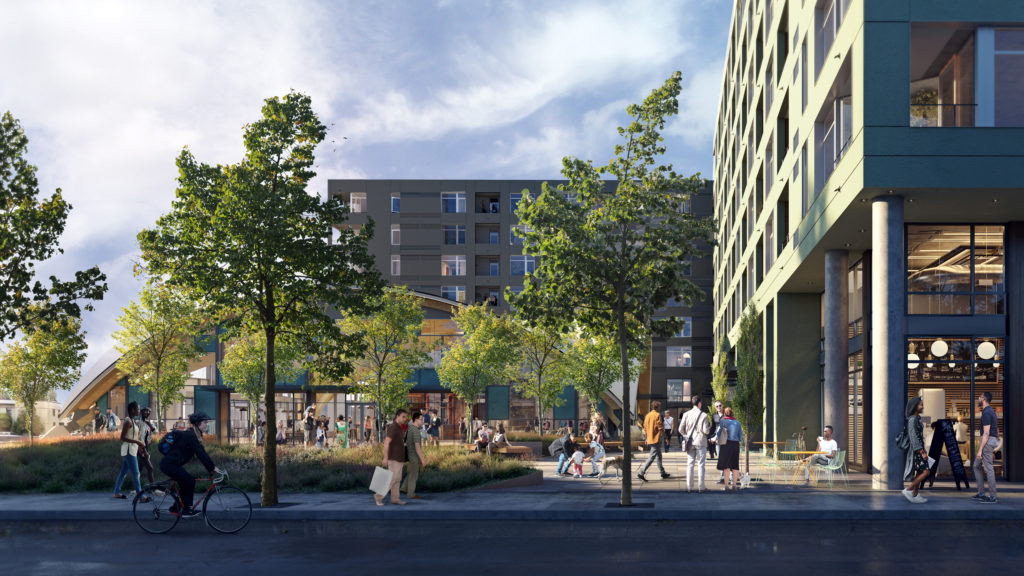
The masterplan boundaries include the superblock bound by NE Holladay Street, NE 27th Ave, NE Oregon St and NE 25th Ave, as well as a half block parcel at NE Pacific St and 27th Ave. The first phase will be located at the corner of NE Sandy and 27th.
The site is known for the 1962 pavilion structure, designed by Scott & Payne architects. The building was surveyed as part of City of Portland’s 1984 Historic Resources Inventory, and assigned Rank II, indicating that it may be eligible for listing in the National Register of Historic Places.
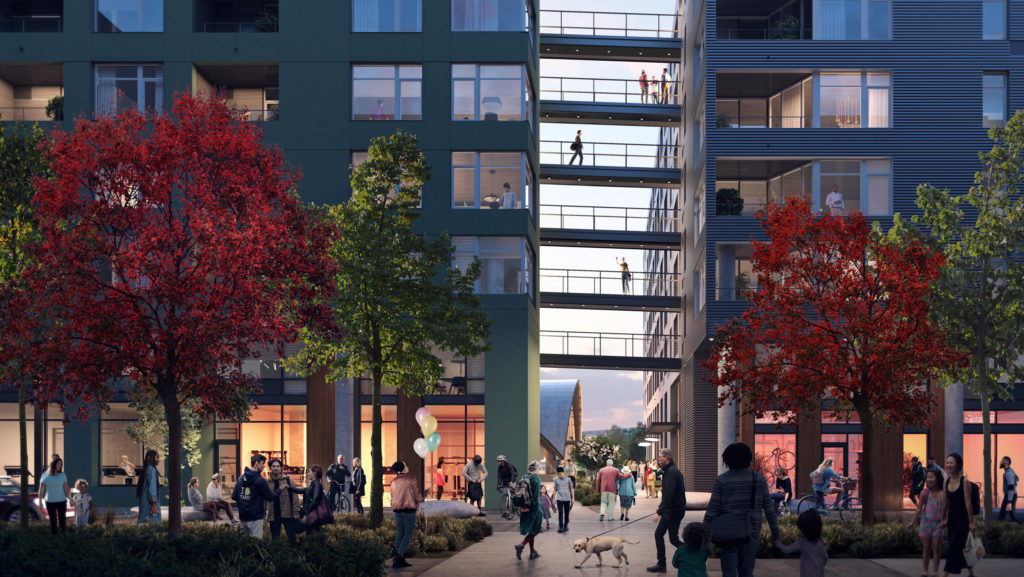
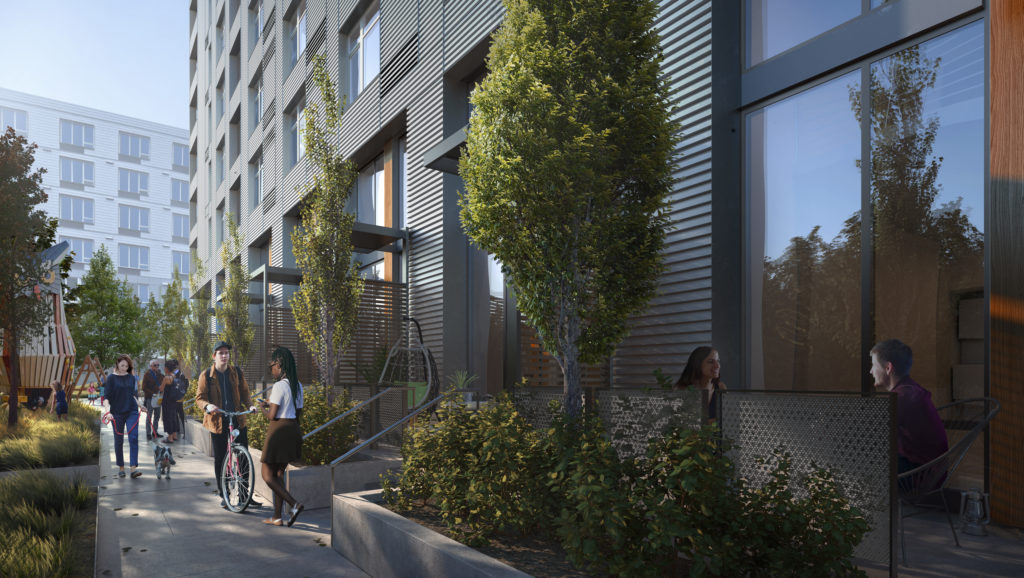
The L-shaped residential building will wrap around the retained 1962 pavilion, with new pedestrian “mews” connections created between the pavilion and the new construction. A pass-through at level 1 would create a pedestrian connection from NE Sandy Blvd to NE Pacific St. Ground floor retail units will face both NE Oregon St and NE 27th Ave, with the balance of the ground floor occupied by work/live units, townhouse units, and residential lobby and amenity space.
The main body of the pavilion will be converted to retail uses, with the potential for the structure to be leased to one large tenant or multiple smaller tenants.
The pavilion’s sidecar element will be removed to create a new publicly accessible plaza. The intersection of NE Oregon St and NE Sandy will be realigned so that the two meet at a 90 degree angle, shortening crossing distances for pedestrians.
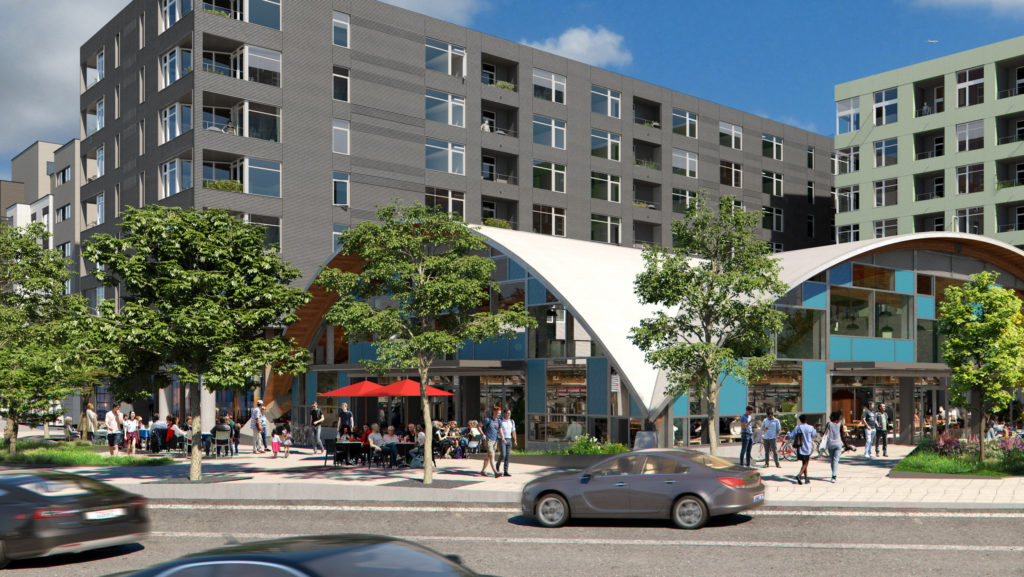
The existing facades on the pavilion building will be removed and replaced with a pattern of transparent glazing and chevy blue accent panels, based on the original design concepts for the structure. New entries to the pavilion from the plaza will be created, with aluminum plate canopies providing rain protection.
The mixed use building will have with two primary materials: ribbed metal for the building wing facing the mews and stucco for the wing facing the plaza. Other materials proposed include white vinyl windows, aluminum storefronts, and metal accent panels.
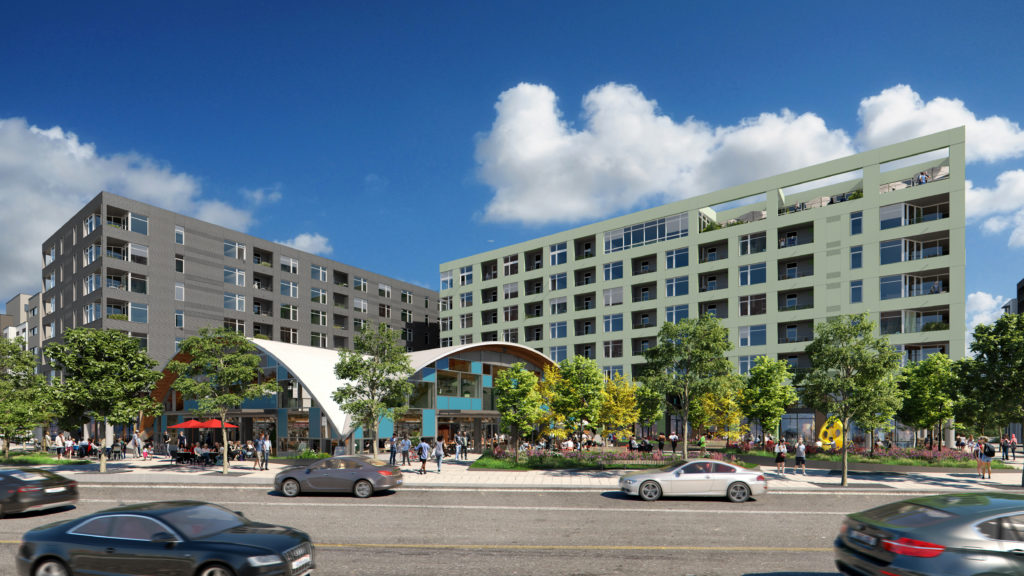
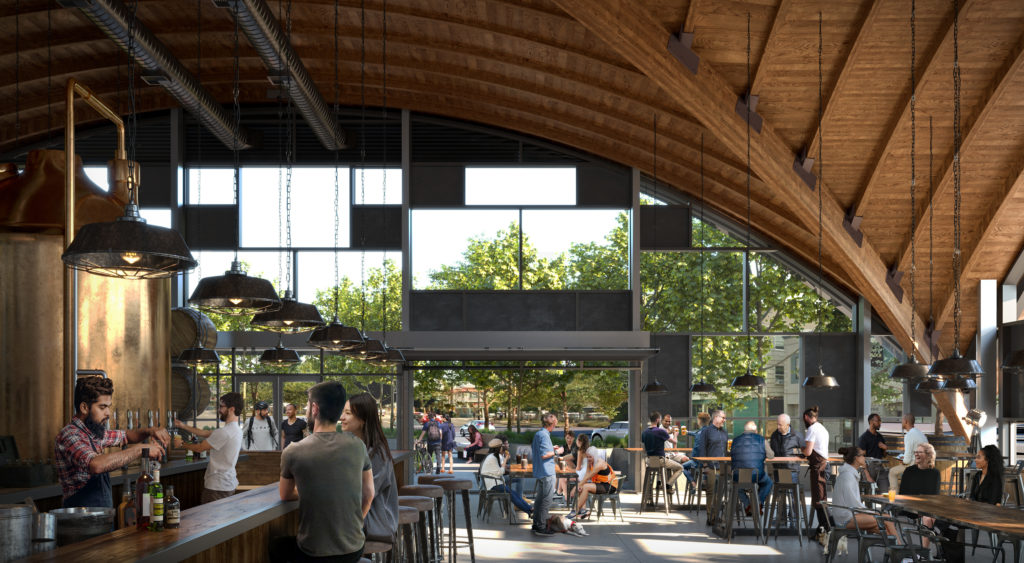
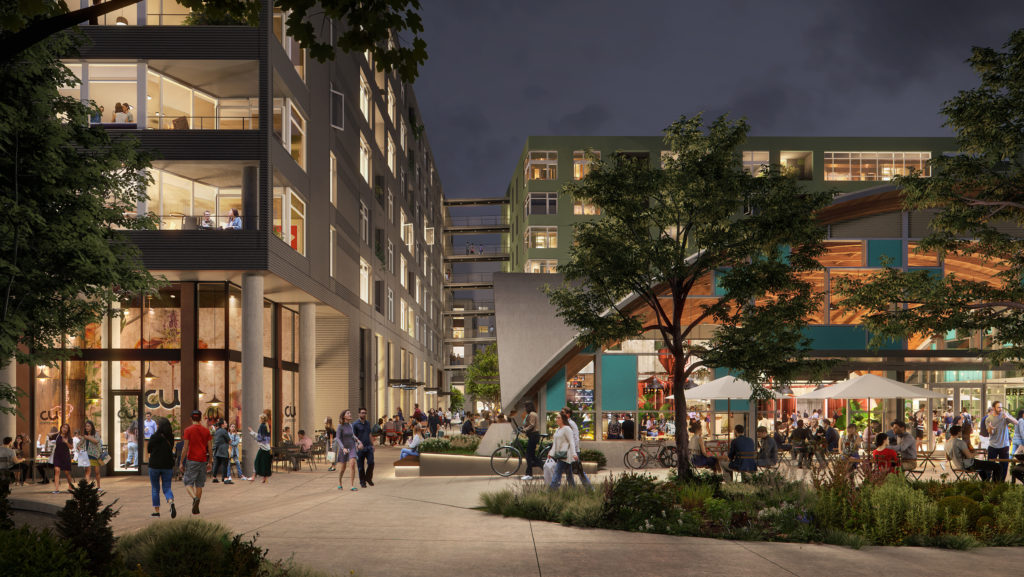
Phase 1A of the Pepsi Blocks was approved at its second design review hearing, held on September 19th 2019. The project had previously been in front of the Design Commission for Design Advice in May 2019.
In the Final Findings and Decision by the Design Commission the project was praised for the public benefits that it will bring:
The design review process exists to promote the conservation, enhancement, and continued vitality of areas of the City with special scenic, architectural, or cultural value. The proposal is an excellent example of the purpose of Design Review. It adds significant publicly-accessible open space, restores an existing mid-century building that is character-defining for this neighborhood and street, and proposes new buildings that are designed to highlight and complement the existing historic Pavilion. The proposal exceeds the applicable design guidelines, and meets the modification and adjustment criteria and therefore warrants approval.
Building permits will need to be obtained before construction can begin.
Full disclosure: the author of Next Portland submitted testimony in advance of the previous Design Advice meeting, on behalf of Docomomo Oregon.
Drawings
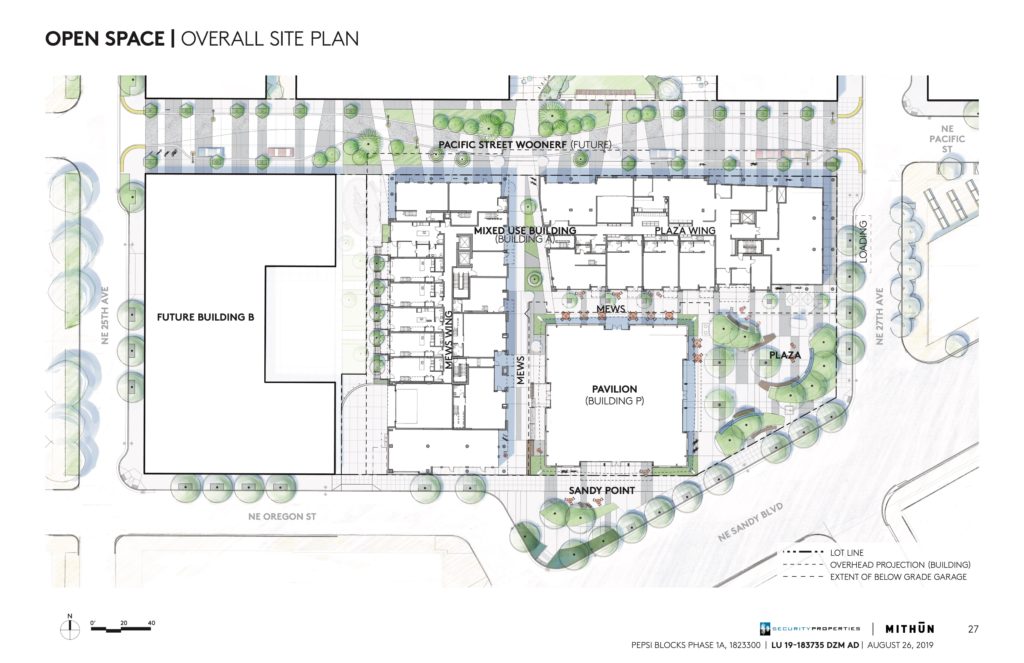
Plan | Site 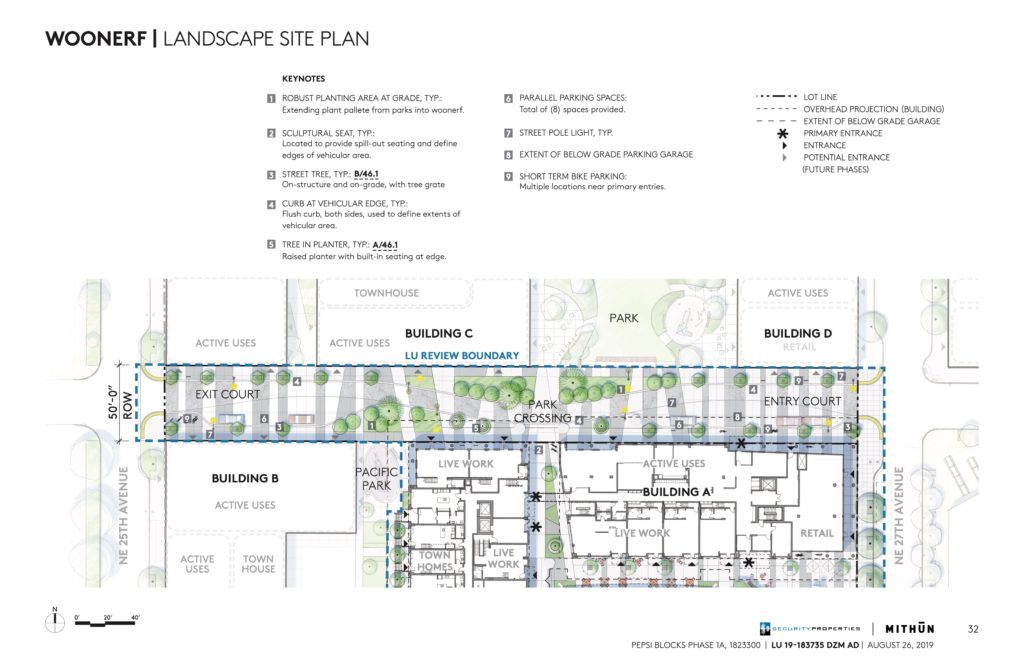
Plan | Woonerf 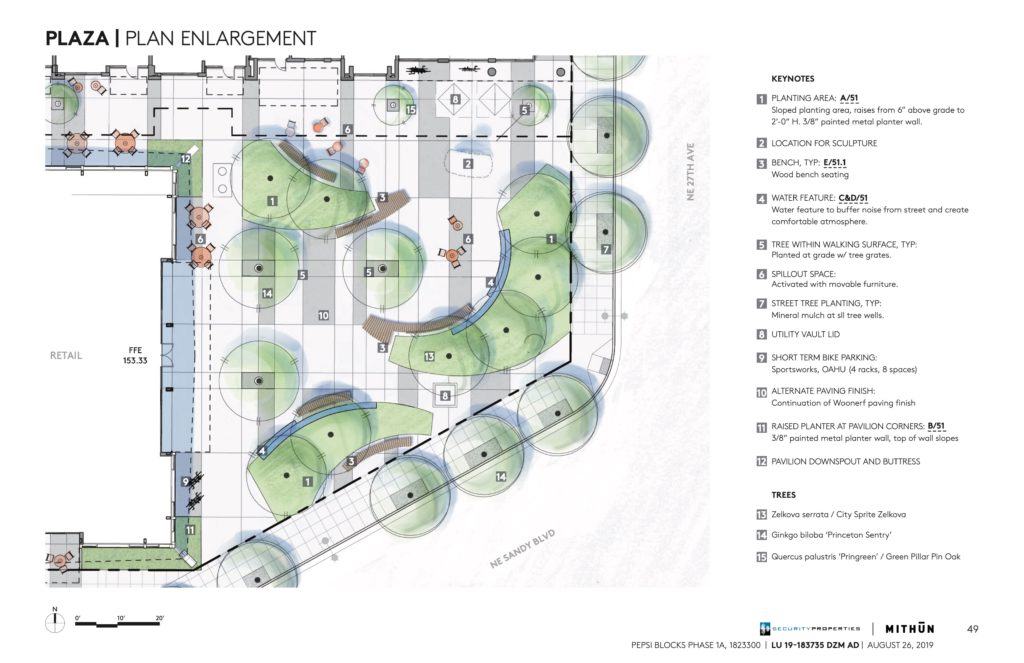
Plan | Plaza 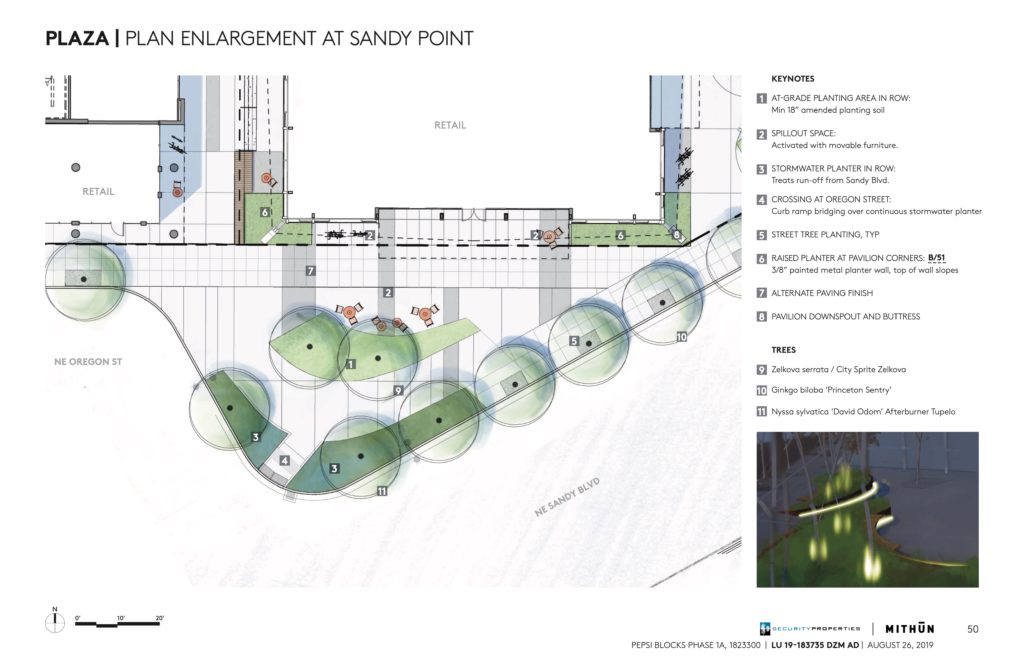
Plan | Sandy Point 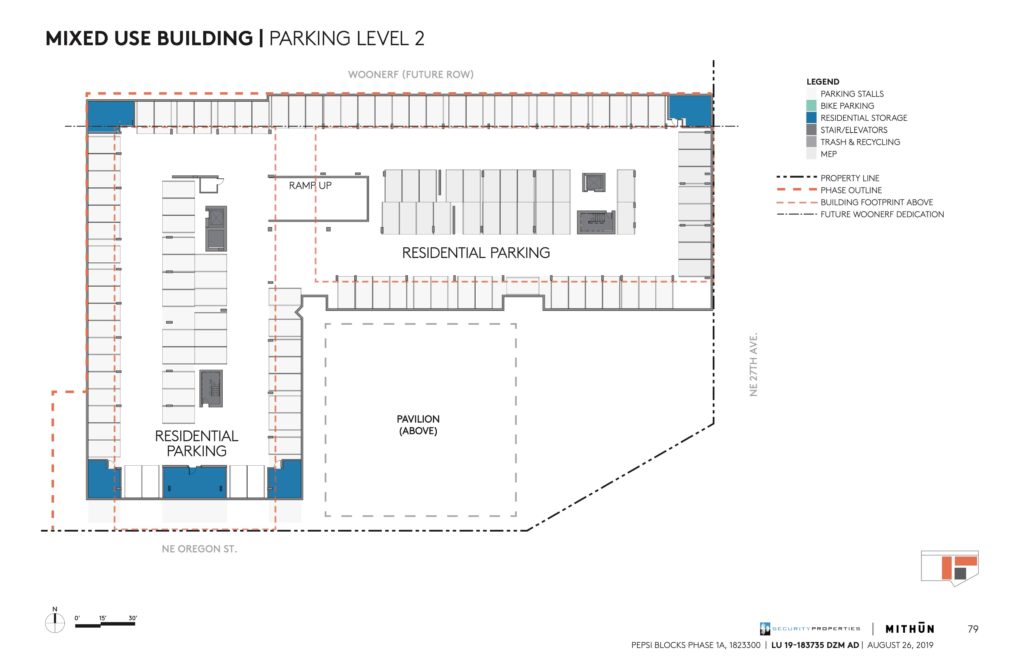
Plan | Mixed Use | Parking Level 2 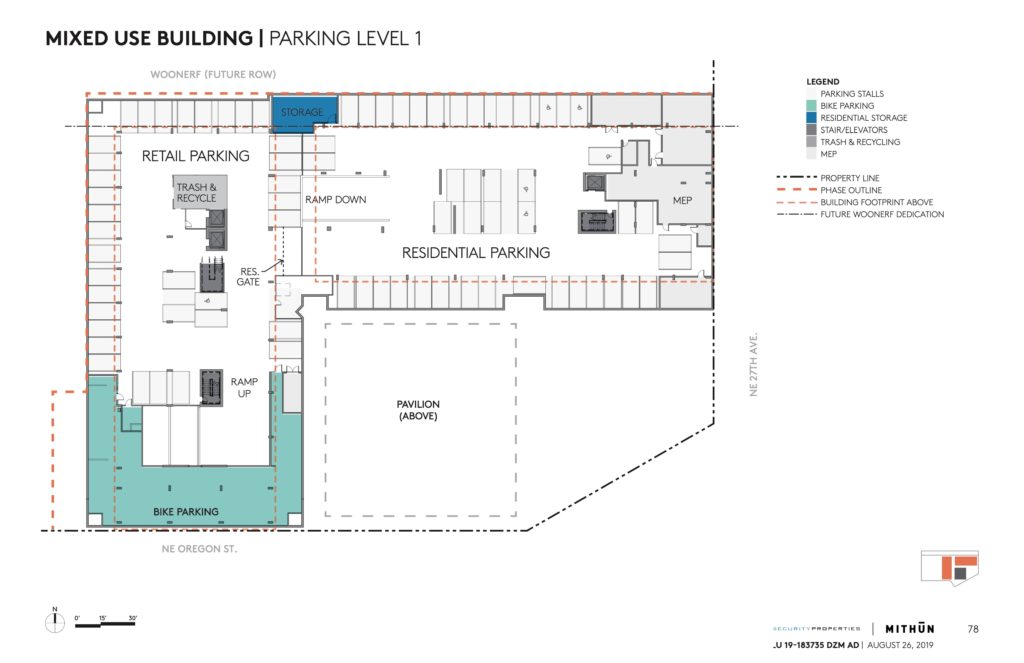
Plan | Mixed Use | Parking Level 1 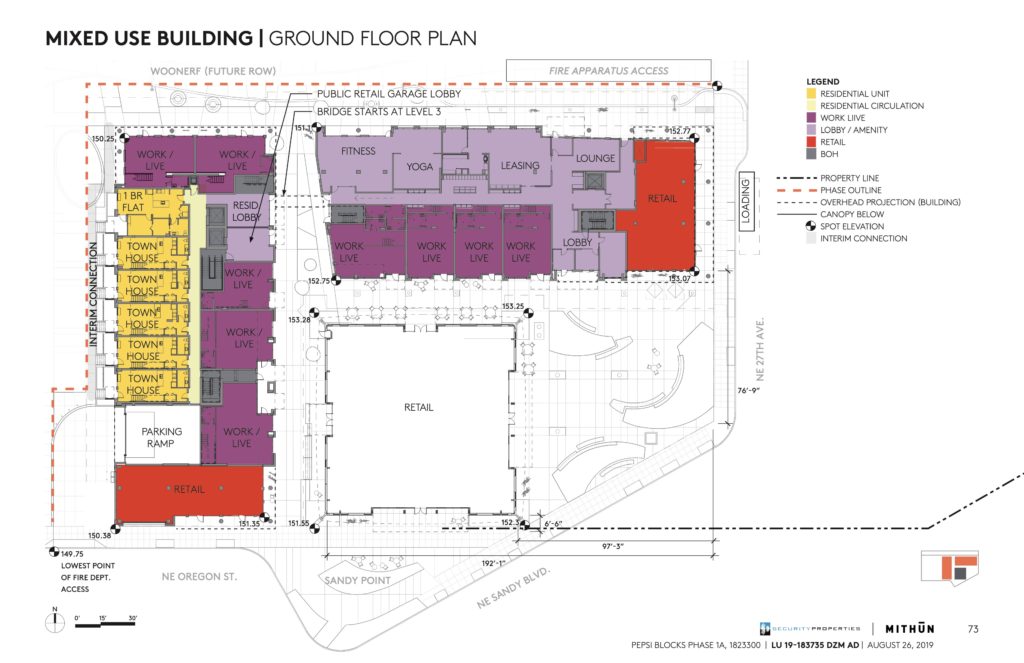
Plan | Mixed Use | Ground 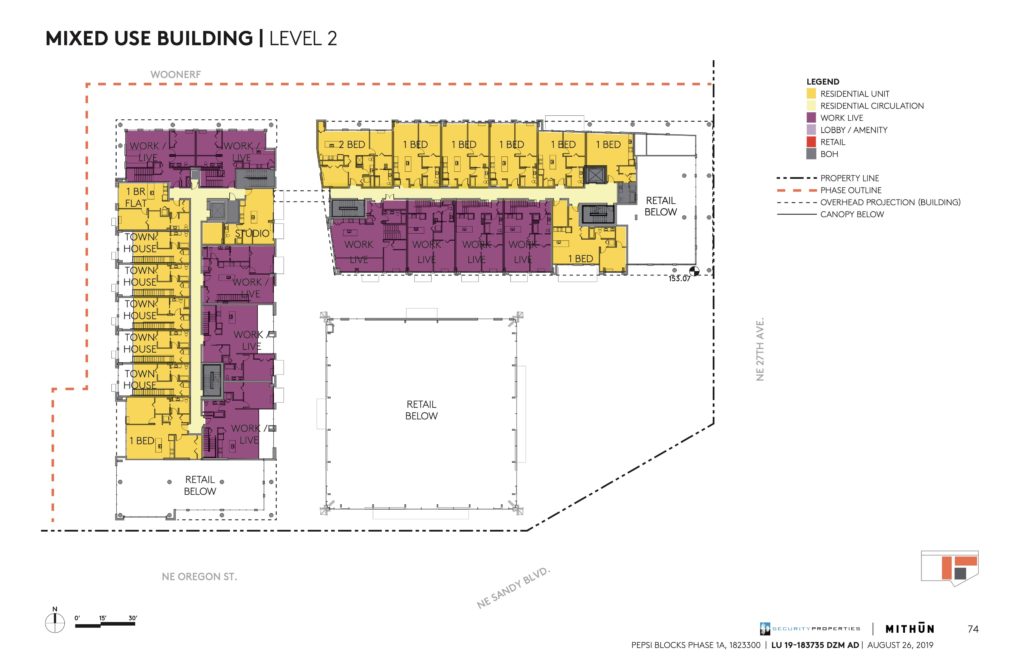
Plan | Mixed Use | Level 2 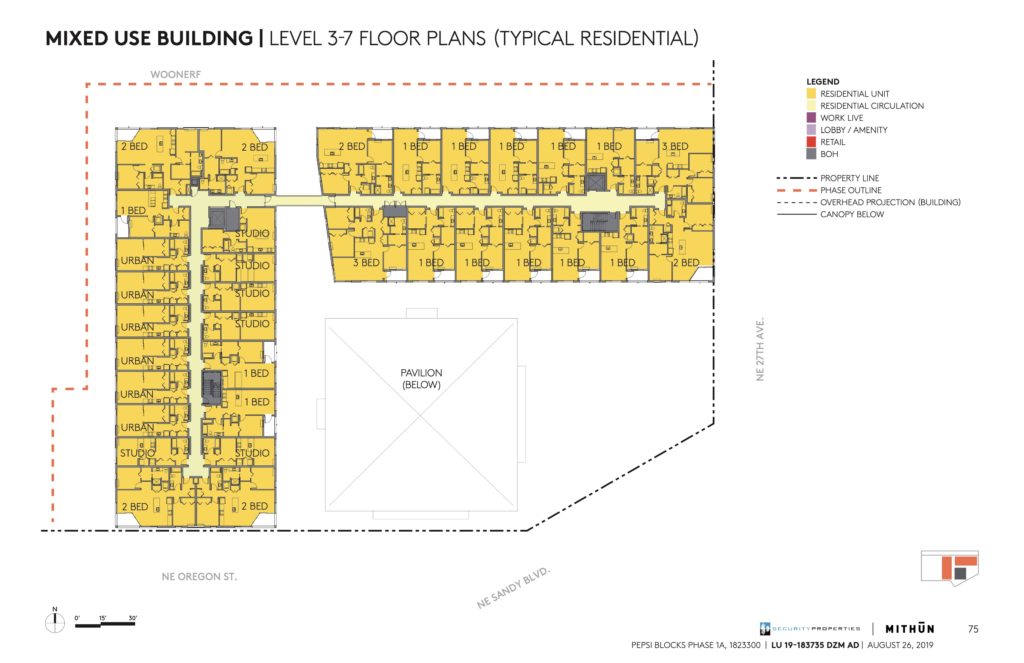
Plan | Mixed Use | Levels 3-7 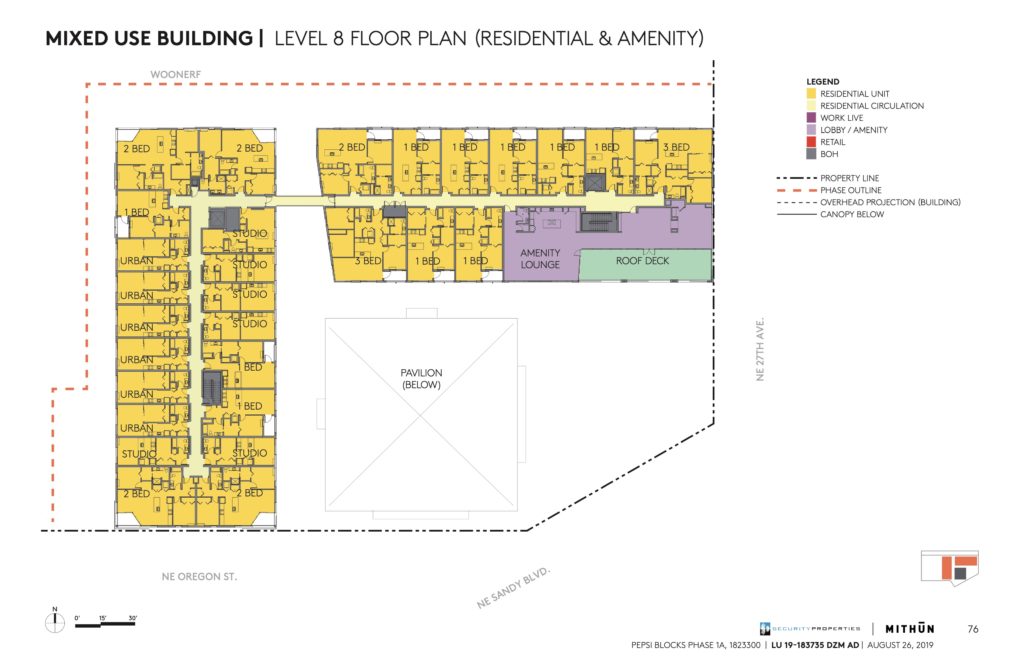
Plan | Mixed Use | Level 8 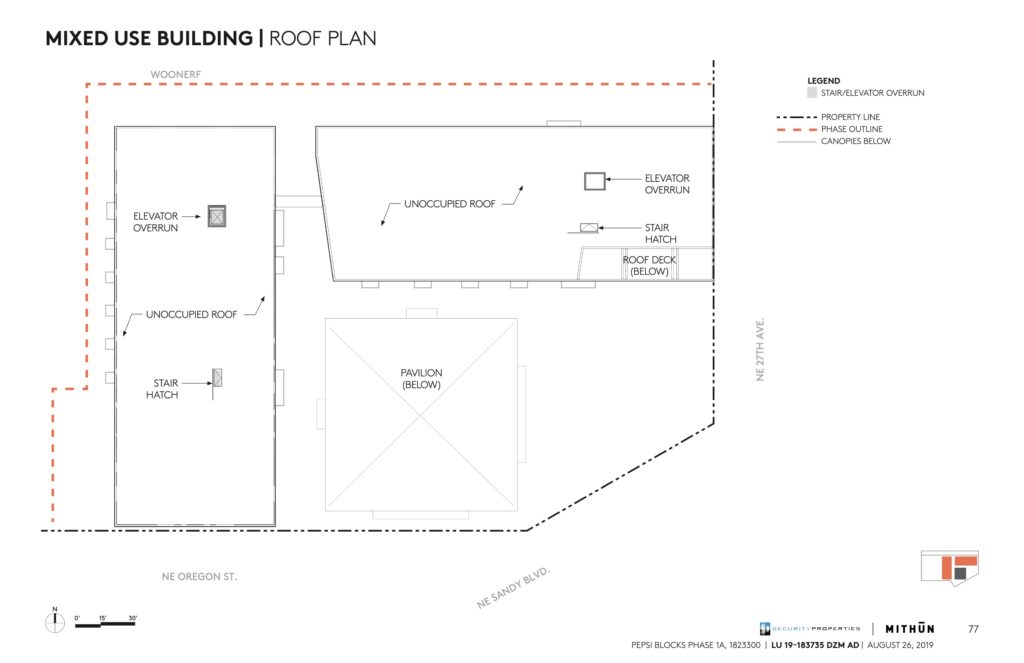
Plan | Mixed Use | Roof 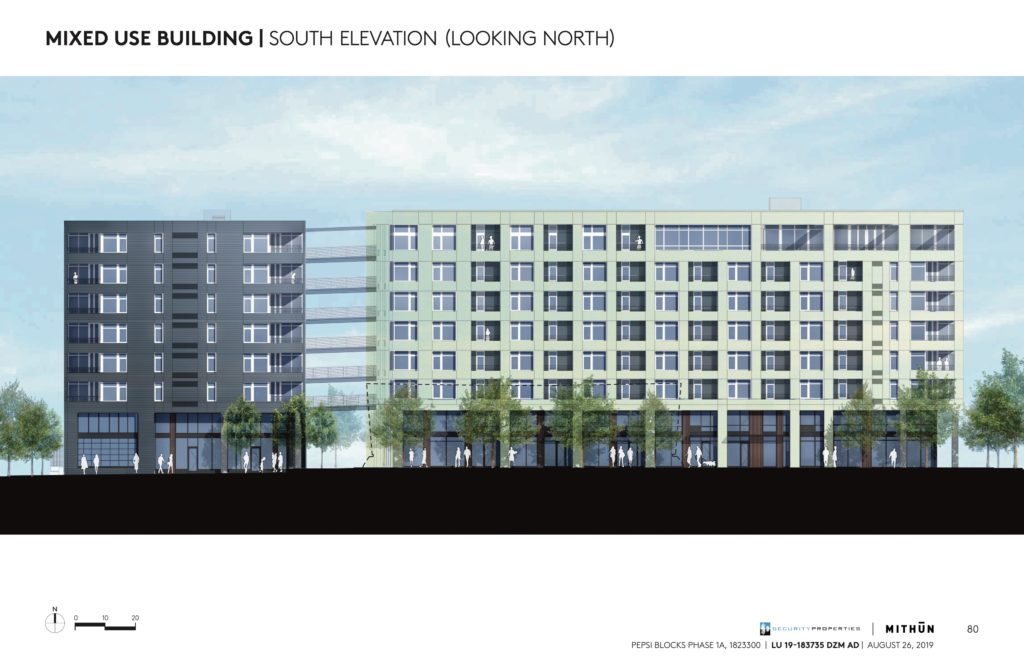
Elevation | Mixed Use | South 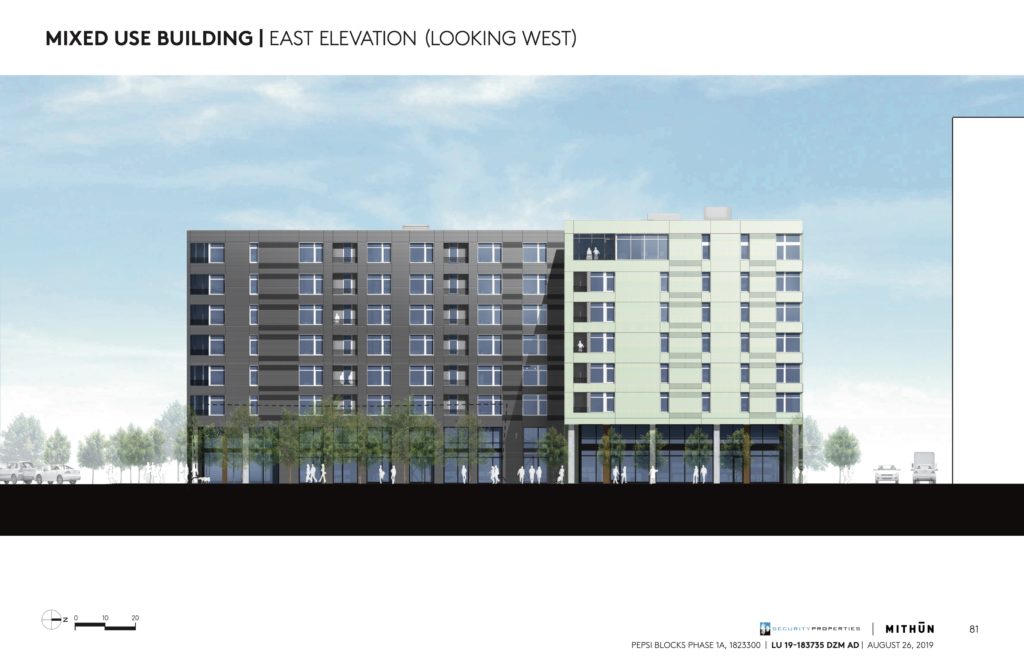
Elevation | Mixed Use | East 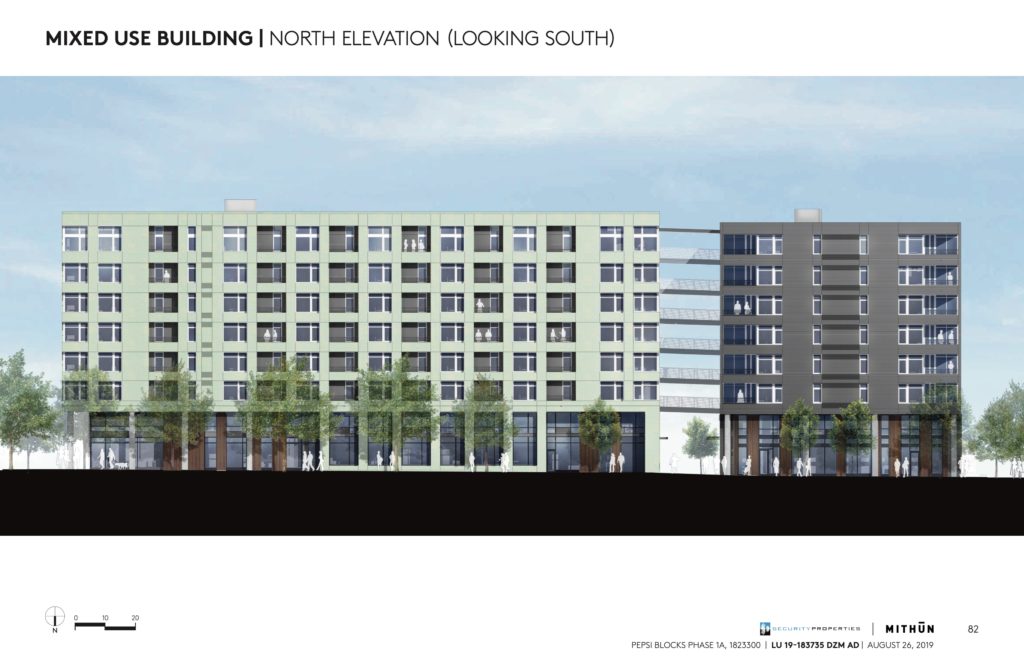
Elevation | Mixed Use | North 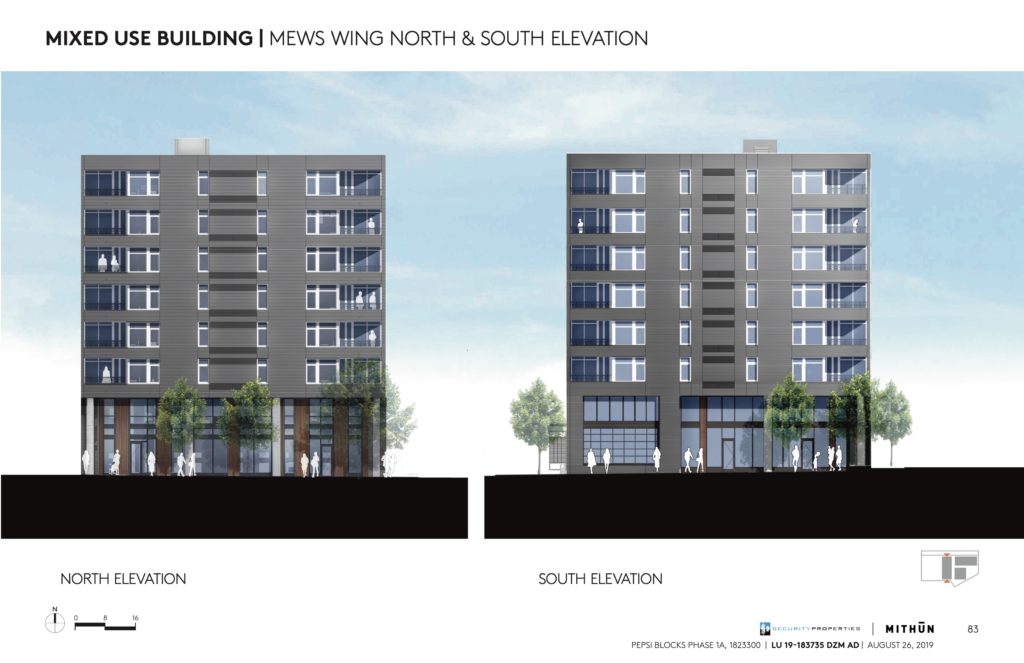
Elevation | Mixed Use | Mews Wing North & South 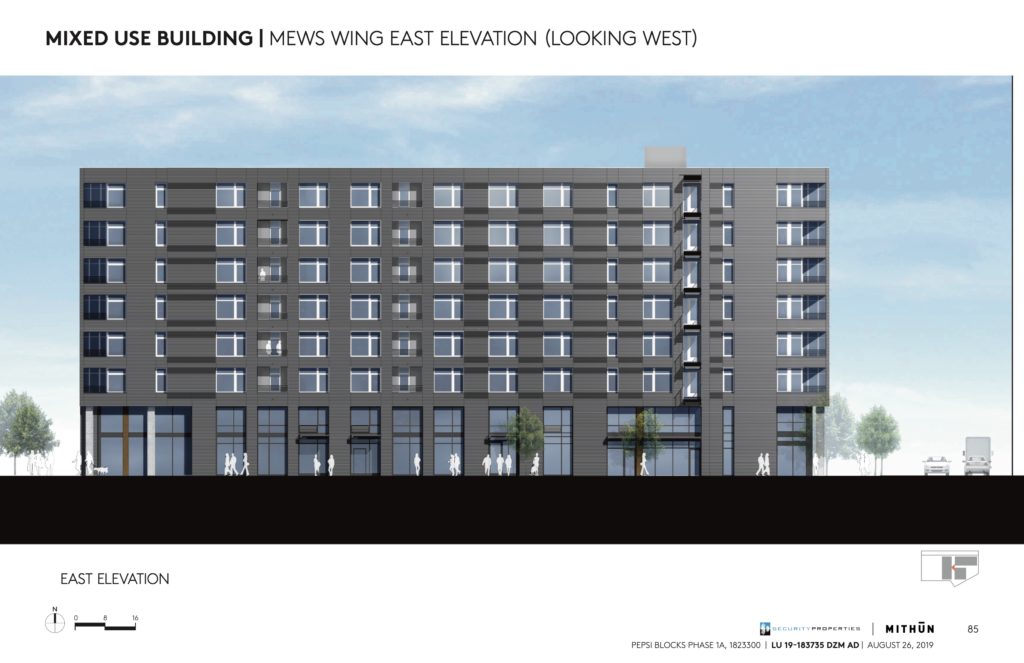
Elevation | Mixed Use | Mews Wing East 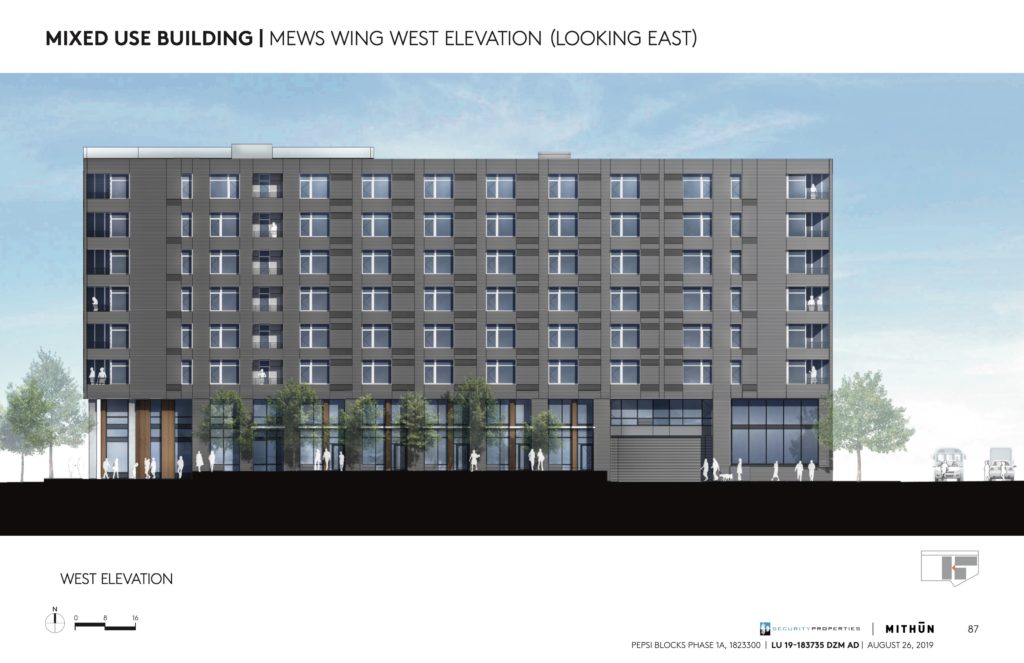
Elevation | Mixed Use | Mews Wing Wes 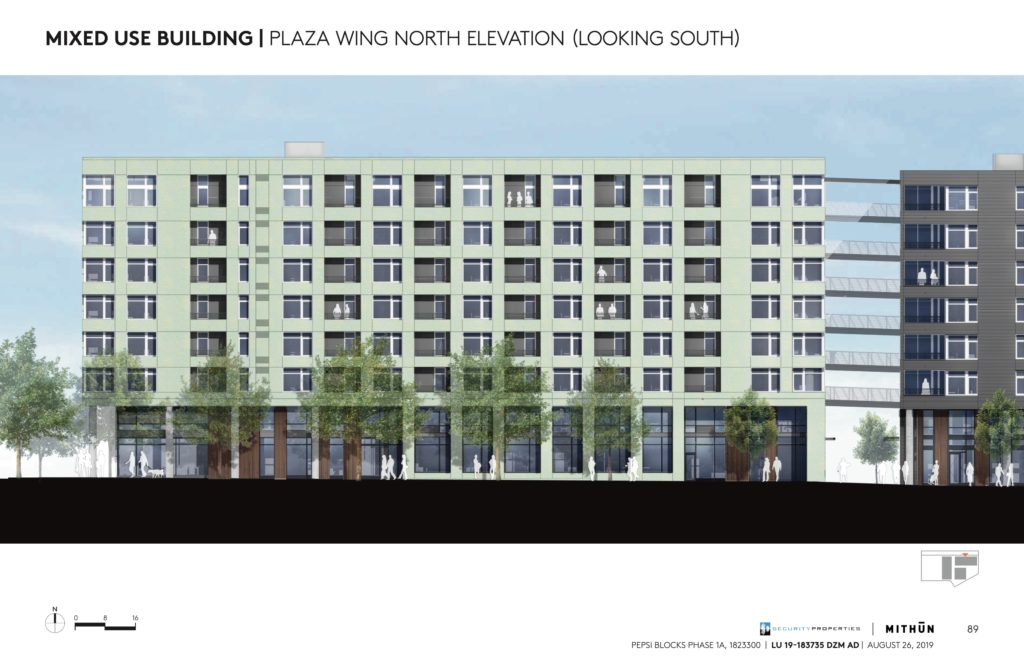
Elevation | Mixed Use | Plaza Wing North 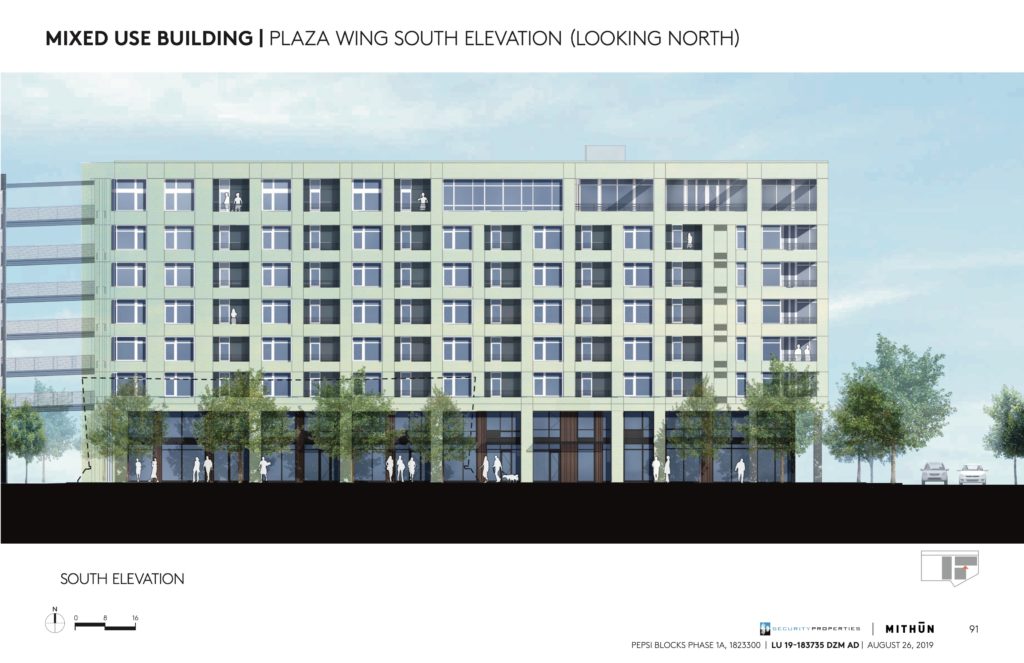
Elevation | Mixed Use | Plaza Wing South 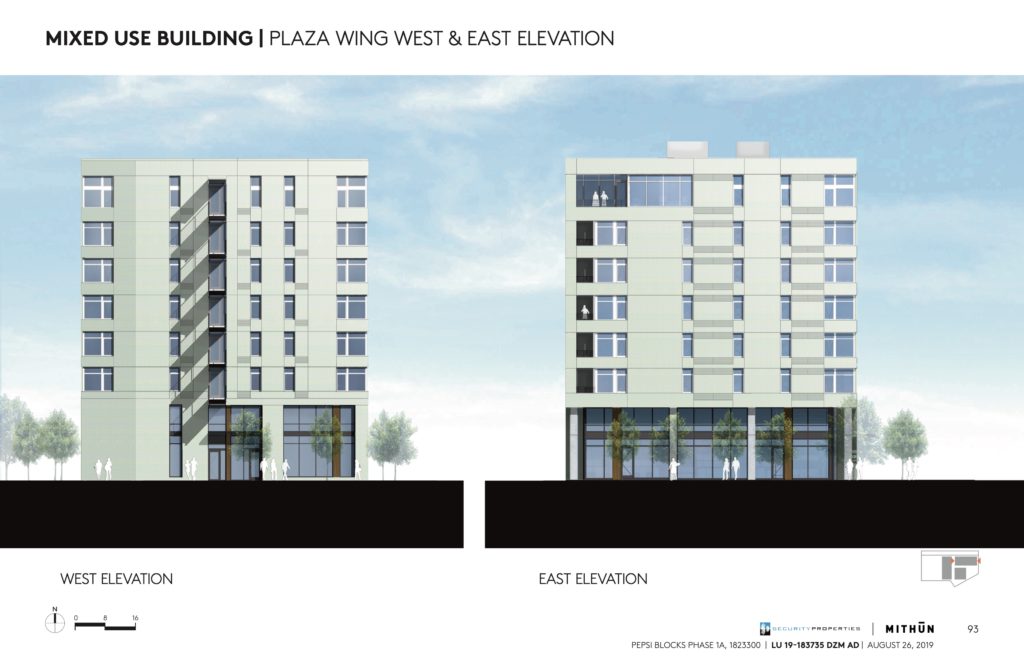
Elevation | Mixed Use | Plaza Wing East and West 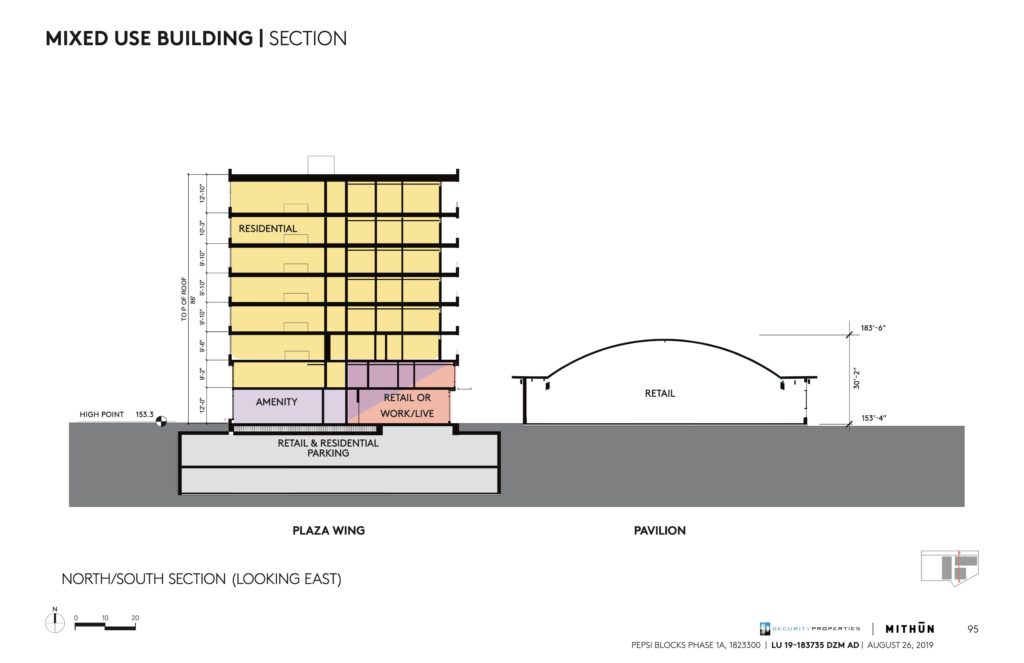
Section | Mixed Use 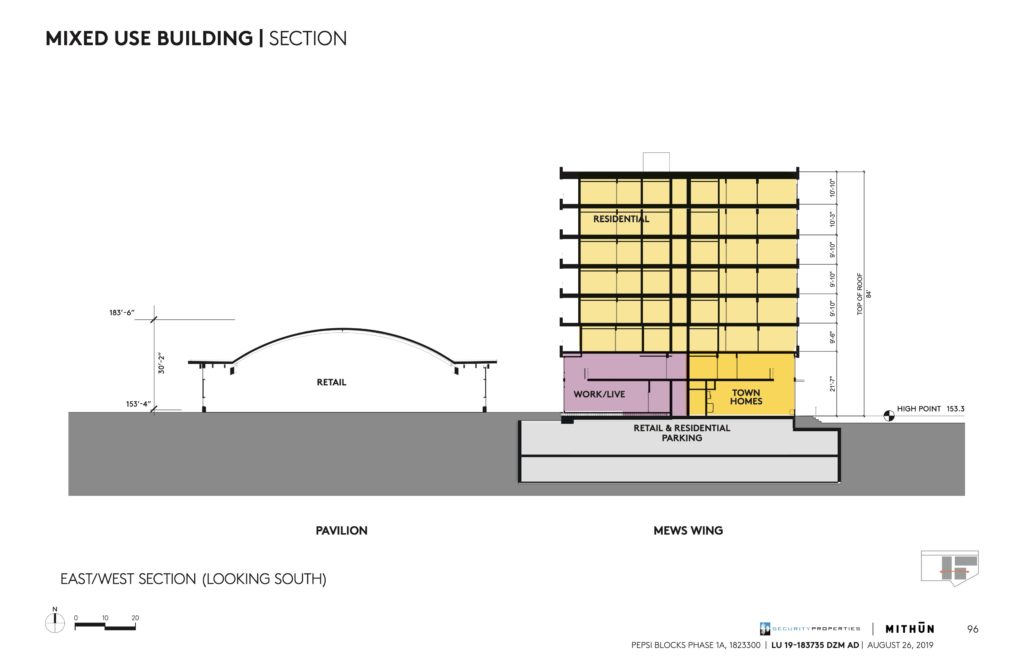
Section | Mixed Use 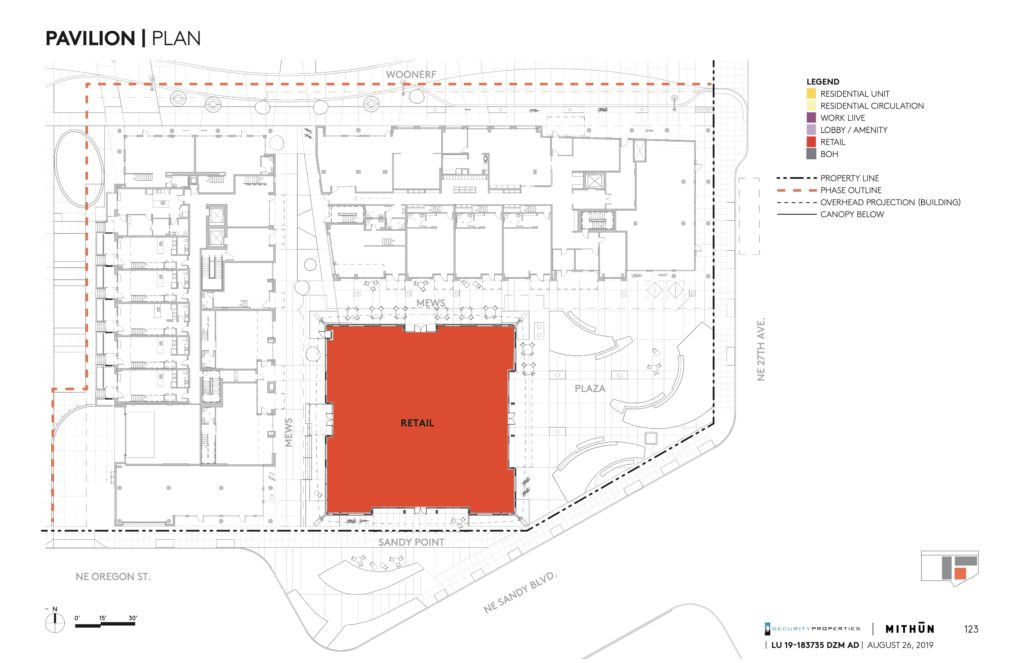
Plaza | Pavilion 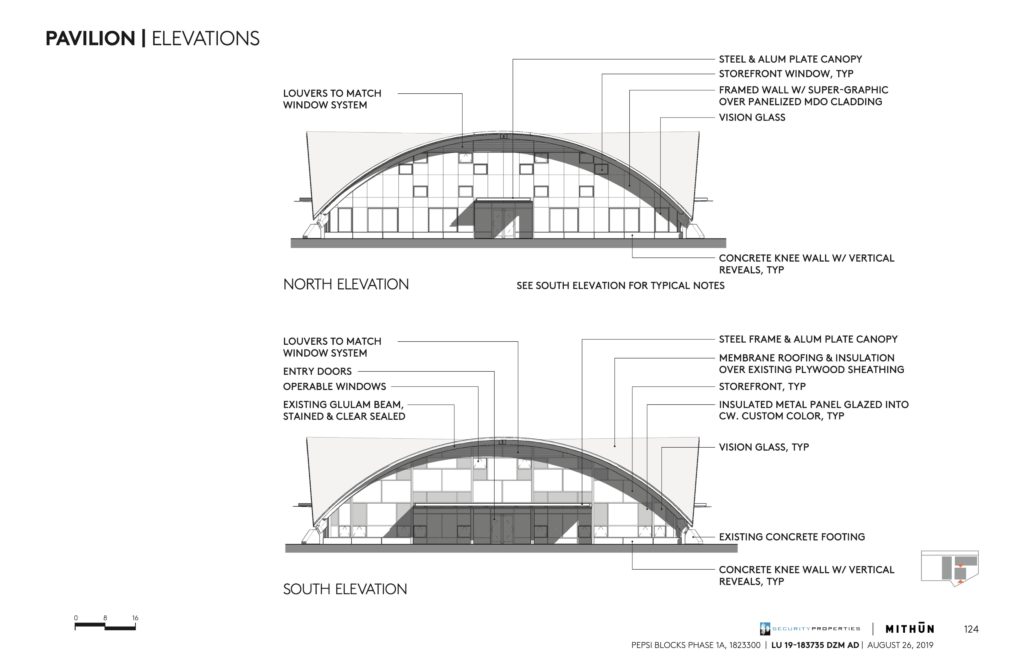
Elevations | Pavilion | North and South 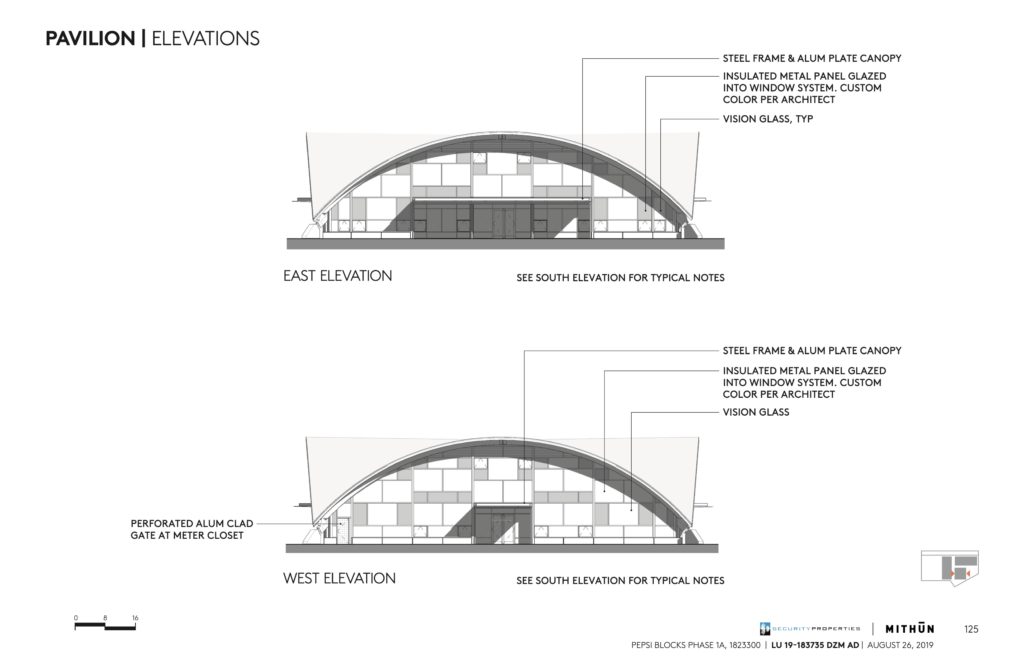
Elevations | Pavilion | East and West
When will construction on this start?
The way this city moves probably takes at least 6 months to get building permits then they break ground is another story.
Hopefully this project will actually break ground, and investors won’t back out, as what has appears to have happened with 1400 NE Multnomah
I doubt they’ll start this. If the movie theater parkland development got cancelled and Oregon square did, theres no difference here. In fact those two locations are much closer to the max and they still got cancelled
Damn why they get rid of Simran George comment?
I’m curious too about what happened to my original comment. To sum it up: The lloyd district has other challenges that make it a non-destination at the moment: an urban renewal image, a decrepit mall with acres of parking, a non-intuitive street layout, and poor pedestrian experience (lots of modernist (international?) style government buildings that dominate the street but provide no ground floor retail).
The new crop of buildings that tend to infill a district like Lloyd (or anywhere really) are too inorganic; their sense of space and proportions exude soullessness. Having all glass facades can be great for light, but oftentimes just also convey blandness and a monotone aesthetic. It’s not as jarring if its around older buildings that tend to exude character, but when its around other soulless buildings, the issue is that this lack of character for the area is magnified in some ways. The newer buildings are better in a sense that there is a nod to the pedestrian experience with ground floor commercial real estate, but oftentimes that storefront real estate is proportioned in a way that makes it unattractive to good neighborhood hangouts/businesses that anchor a neighborhood and give it its flavor.
When I look at new crops of condos that have ground floor retail I often think the commercial spaces are just too big. When you have an excess of square footage like that, you are forced to charge a highly monthly rent. The only businesses that can afford that are going to be ones like national chains, or high end establishments. I think creating smaller, hole-in-the-wall places that have lower rent overheard would be a good move here for fostering community. Good neighborhoods tend to have a mix of businesses that appeal to different price points, and allow all types of businesses to find spaces that can allow them flourish. If you were to infill the Lloyd with and proportion out the spaces to allow for an eclectic group of businesses, then I think we have a shot of making the neighborhood feel more organic…otherwise it’s just “lipstick on a pig” as the saying goes.
The nice thing about the Pepsi Blocks is that even if it is developed with high end businesses and condos, it still has a connection with the existing street network to the existing older neighborhood around it. It would be nice if they do partition commercial space to be smaller to make it more affordable to all sorts of businesses (like great immigrant establishments), but unlike the Lloyd, it’s not infill that’s just marginally better than what was already there.
Those are my thoughts. Feel free to agree/disagree.
Please accept my apologies. It had nothing to do with the content of your comment. I had to reinstall the entire site from backup on Sunday, to fix a problem that had made the development map impossible to update. Your comment that went missing must have been left between when the backup was made and I reinstalled. Hopefully this is a one off issue.
Thanks dude that made a lot of sense. Did you think the huge Oregon square project would have been a great start before it got cancelled?
Hey Karl,
Honestly, not really (based on my limited understanding of the Oregon Square Project from here: https://www.nextportland.com/2015/02/16/oregon-square-images/). It just seems like with the superblock they are doubling down with this modernist mess that lead to the Lloyd District in the first place.
I’m also not sure what this obsession with plaza in the Oregon Square project are either. This wouldn’t have been a very grand space, particularly because with superblock the area just doens’t seem inviting–to any ordinary pedestrian it just feels like your walking onto a campus of a school you do not attend. You can actually see how it’s pretty much closed off in the rendering. And what would you do in that plaza if it were to exist? It’s not like you have a reason to be in the Lloyd in the first place (other than if you live in the surrounding buildings, which once again, hanging out in that plaza seems silly–there’s nothing motivating someone to sit or lay in that plaza). If you lived in Oregon Square, it just seems like you’d be on an island–there’s really nothing of interest around you.
Ultimately, there are so many dead areas in the Lloyd, anchored by a pretty decrepit mall and parks that look like they are from a Soviet-era city bounded by 2 freeways.
A great neighborhood should have a particular draw (a great park, with active recreation), a particular natural feature, distinct (and memorable) architecture, cool historical buildings, an ethnic history, etc. Something that invites you to take a walk around, and is a neighborhood you’d actually want to live in or spend time in, not leave as soon as your workday ends (which is what the Lloyd is).
I believe the pedestrian bridge will help (and possibly more connections over the 84), and if they ever bury the I5 and provide a seamless connection with river (yeah I know, $$$), it could be a great neighborhood. I’m sure there are other ways (most likely starting by building closer to the Irvington neighborhood to the north to extend the relationship and walkability from the north.
But plopping a superblock in the middle of this district will not revitalize the Lloyd or inspire someone to pay rents to live there (probably why it got cancelled).
Wow that’s interesting seems like Lloyd is doomed for a long time then
Shimran, I lived in the Irving neighborhood for about three decades and could not agree more with your analysis. The Lloyd District is a victim of auto-cracy: pedestrian- and neighborhood-hostile. Good neighborhoods are places where people want to walk, to pause, to meet, to play, to hangout, to shop, to mingle, to see other people. They are resident-centered. Thoughtful mending is needed if the Lloyd District is to ever grow into a Lloyd Neighborhood.
Superb commentary. I know it’s been years since it was made but had to make it known.
Low rent commercial retail is crucial. Picture that one tenant for 5000sqft costs 5k but is harder to fill. Five tenants at 1200 each bring in more money for the owner and the lower barrier to entry makes it easier to lease (and more likely it’s unique).
I’m not an urban planner (just a huge enthusiast of infrastructure/design/city building), so take what I say with a grain of salt. This is, at best, a guess, albeit a somewhat educated one.
The Lloyd can improve, it’s just it has a long way to go to be a destination, and even longer way to be one of Portland’s great neighborhoods. It’s feel very disconnected from the urban fabric (in the same way the South Waterfront does) and has nothing of historical charm, or great parks to speak of. Building intuitive street connections to better integrate it into the surrounding neighborhoods would do a lot for it.
What I find (I’ll use NY as example) in revitalized neighborhoods full of new glassy buildings, is that there is a draw that makes the neighborhood a place you (whether a visitor or resident) want to walk around in. In LIC/Williamsburg for example, a beautiful riverfront park with expansive views of Manhattan. In the Hudson Yards, it’s going to be the Highline/Shed/Vessel. It helps that these neighborhoods still conform to a grid and are generally walkable.
Right now, the Lloyd has none of that going for it, but seriously I think Portland can do a lot to make it a great area to be in! I just think simply infilling the Lloyd with new buildings (without a better cohesion strategy and addressing some of the other negatives of the area), will not suddenly make the Lloyd an interesting place to be.
What neighborhood in Portland do you find has the infrastructure to be the next destination?